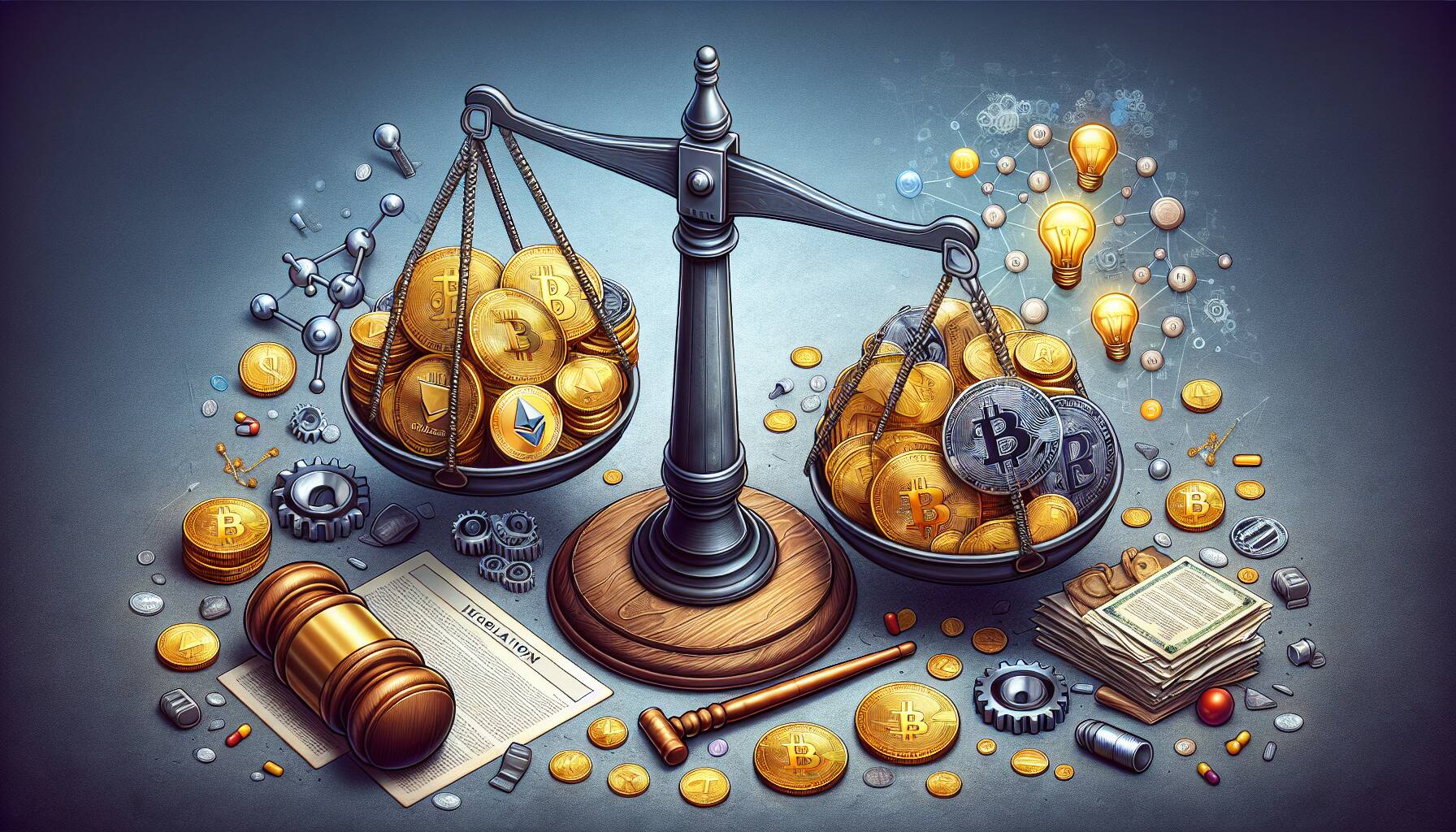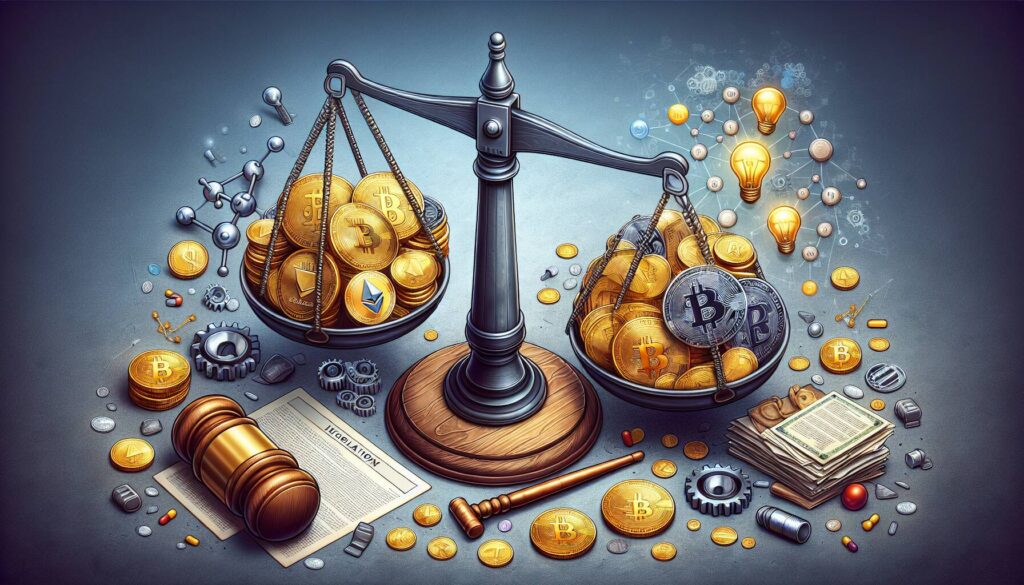This week in the cryptocurrency world has been marked by flat markets, with Bitcoin trading in a narrow range between ,000 to ,000. The CoinDesk 20 index, which encompasses a substantial portion of the market, hovered around 2,600. This stability comes amid growing concerns about how cryptocurrencies are increasingly aligned with broader financial markets, which are being adversely affected by tariff anxieties and diminishing corporate earnings. As a result, some market observers are suggesting that the bull market for Bitcoin may be over.
However, this narrative only scratches the surface of the vibrant developments ongoing within the industry. On the regulatory front, significant dialogues are unfolding as Washington prepares for a historic “market structure” bill in Congress, according to reports by Jesse Hamilton. The impending confirmations of key figures, including Paul Atkins as SEC Chair and Jonathan Gould at the OCC, signal a potential shift in the regulatory landscape. Meanwhile, Congress continues to discuss a stablecoin bill, underscoring the systemic role Tether plays in the market, as highlighted by Kris Sandor.
“EU officials are actively discussing the implications of USD dominance in stablecoins while plotting a course for a digital euro or central bank digital currency (CBDC), as noted by Jamie Crawley.”
In a notable development, Eric Trump has joined Metaplanet, which aims to carve out a significant niche in the crypto space akin to Michael Saylor’s MicroStrategy. The Trump family’s investment in cryptocurrency signifies their belief in its future potential.
Our investigative teams have also been diligent in covering emerging protocol projects, with Oliver Knight shedding light on Cardano’s recent price surge, associated with ADA’s (sort of) inclusion in a proposed national crypto reserve. Unlike other projects that often focus on total value locked (TVL), Cardano emphasizes tangible real-world applications as its measure of success. Meanwhile, Danny Nelson explored Pump.fun’s ambitions to dominate DeFi trading on the Solana platform.
“Bitcoin miners are currently feeling the strain of declining hashrates and transaction fees, which have reversed some gains made after the elections, reports Tom Carreras.”
Furthermore, Jamie Crawley provided insights into the challenges bitcoin developers face while attempting to incorporate zero-knowledge proofs on the Bitcoin blockchain— a complex undertaking given its decentralized nature.
In Asia, our team has excelled in market coverage, with Omkar Godbole identifying the conclusion of the Fed’s quantitative tightening and linking a flash crash of the Turkish lira to a spike in Bitcoin trading activity in Turkey. Meanwhile, Shaurya Malwa reported on XRP’s promising prospects regarding Ripple’s strategic reserve and its plans for an IPO, alongside developments from Raydium targeting Pump.fun. Lastly, Parikshit Mishra’s swift reporting on Kraken’s acquisition of NinjaTrader for .5 billion stood out among other news outlets.
While prices may be plateauing, it is clear that the cryptocurrency industry continues to innovate and progress across multiple fronts, suggesting a dynamic future lies ahead.

Weekly Crypto Market Update
This week’s overview reflects stability in the crypto market despite external pressures, highlighting significant developments that may impact readers in various ways.
- Bitcoin’s Price Stability
- Bitcoin remained rangebound between ,000 and ,000.
- The CoinDesk 20 index stabilized around 2,600.
- Market Correlation with Financial Markets
- Crypto prices are increasingly correlated with broader financial market movements, affected by tariff concerns and diminishing corporate earnings.
- Some analysts speculate that the recent bitcoin bull market may have ended.
- Regulatory Developments
- Washington agencies are preparing for a historic “market structure” bill in Congress.
- Paul Atkins and Jonathan Gould are nearing confirmation to key regulatory positions (SEC and OCC).
- Discussions continue on a stablecoin bill, emphasizing Tether’s growing systemic importance.
- Global Trends in Digital Currency
- EU officials are addressing USD dominance in stablecoins and are planning a digital euro or CBDC.
- Eric Trump joins Metaplanet, indicating a continued interest from influential figures in crypto’s future.
- Innovations in the Crypto Space
- Cardano’s price surge linked to its potential inclusion in a national crypto reserve has garnered attention.
- Pump.fun aims to compete in the DeFi trading space on Solana.
- Developers are working on integrating zero-knowledge proofs into bitcoin’s blockchain, indicating advancements in privacy technology.
- Challenges and Changes Within the Industry
- Bitcoin miners are facing difficulties due to declining hashrates and transaction fees.
- North Dakota has passed a crypto ATM bill, reflecting broader acceptance of cryptocurrency infrastructure.
- Kraken’s acquisition of NinjaTrader for .5 billion signals growth through consolidation in the crypto sector.
This week serves as a reminder that while prices may fluctuate, significant advancements and regulatory developments continue to shape the future of cryptocurrency, affecting both industry stakeholders and individual investors.
Analyzing the Current Crypto Landscape: Opportunities and Challenges
The cryptocurrency market’s recent performance showcases a mixed bag of trends and developments. While bitcoin’s value has stabilized between ,000 and ,000, concerns about its correlation with traditional financial markets loom large, particularly amid tariff uncertainties and declining corporate earnings. This flatness is echoed across other crypto assets, as evidenced by the CoinDesk 20’s steady position around 2,600. Such a scenario could signal a stagnant period for casual investors who thrive on volatility, but there are several underlying developments worth noting that may serve more strategic players in the space.
Competitive Advantages: The regulatory scene appears to be trending positively with significant legislative efforts in the U.S. aimed at solidifying a clear market structure for cryptocurrencies. With influential figures like Paul Atkins, an established crypto expert, reportedly on the verge of leading the SEC, there is potential for clearer guidelines that could spur institutional investment. Additionally, ongoing Congressional discussions about stablecoins underline their systemic importance—a sentiment echoed by Tether’s rising prominence. For those keen on long-term investments and institutional backing, this environment bodes well, providing a solid foundation for stable and innovative developments in the industry.
Moreover, developments in global currency policies, particularly from EU officials exploring the implications of U.S. dollar dominance over stablecoins, open doors for projects like digital euros or central bank digital currencies (CBDCs). This could position companies engaging in partnerships or technology aligned with CBDCs advantageously in emerging markets, especially if they can pivot quickly to respond to regulatory changes.
Potential Disadvantages: Nevertheless, these advancements do not come without challenges. The increased scrutiny and regulatory frameworks might dissuade smaller players or new entrants who lack the resources to navigate complex compliance landscapes. Additionally, the bitcoin mining sector faces headwinds due to declining transaction fees and hashrate pressures that diminish profitability, creating an unfavorable environment for miners and potentially leading to a shakeout in the competitive landscape. As these miners try to adapt, they may either become acquisition targets or succumb to market pressures, reshaping the industry’s competitive dynamics.
Furthermore, incidents such as the stabbing of Haru Invest’s CEO could tarnish crypto’s public image, influencing perceptions among cautious investors and regulators. Any negative news could magnify existing apprehensions regarding the crypto market’s maturity. Thus, companies that focus on ethical business practices and security protocols stand to benefit in these uncertain times, while those unable to assure safety and transparency may face uphill battles.
This week’s developments saw diverse sectors within crypto, from DeFi trades on Solana seeking to enhance their market presence to Cardano’s innovative approach in measuring success. Those organizations with agility and foresight in their strategies will likely emerge as winners in a continually evolving landscape. Overall, amid the market’s temporary flatness, robust advancements are being made that could yield new opportunities for both innovators and well-established players alike, provided they are willing to adapt and respond dynamically to the rapid changes inherent in this cutting-edge sector.
















